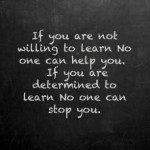By Jean Dorff
5 common mistakes we make when we learn (how to dance)
Whether you learn a language or a new skill some learning principles are universal. Also the mistakes we make when we study are quite the same and almost independent of the subject we study.
Here are 5 common mistakes we make when we learn (how to dance)
1. We don’t observe enough…
Several studies show that human babies, but also newborn animals, learn first by observing. Some linguistics say: ‘use your ears first before you use your mouth’. This is coming from the idea that infants learn a language by hearing first and than by copying or parroting sounds. My younger sister asked me to read a particular story over and over. It was the story of ‘Jack the giant slayer’. One day I saw her sitting with this storybook in front of her. She was ‘pretending’ how to read and recited every word and sentence. She even used the same intonation as I used and she knew when to turn the pages. Her young brain used one learning method really well namely listening. Note that listening is observing with our ears.
We can and should observe with all our senses and build this in as a learning principle. To observe well is a skill in itself and the one that master this will ultimately produce better results. Students are often impatient and want to immediately ‘get their feet wet’. Of course there are students who learn better by doing, but one could debate that these student have not yet mastered the skill of observing first. They often think that observing is not an activity but a passivity. As teachers we should change this and teach our students how to use all their senses and to use observing as part of the learning process.
2. Not curious enough
Another thing we can learn from infants and young animals is their natural curiosity. They want to see, smell and touch everything. As parents we teach our kids the ‘dangers’ of the world. And although unintentionally, we often do that in a negative way: don’t touch this, be careful, watch out etcetera. With our care we might have killed our kids natural curiosity. Children who ‘survived’ their upbringing and kept their natural curiosity have a better chance turning out to be good learners and successful in what they undertake.
Students with an inquiry spirit are the students who have a lot of questions and a great appetite for knowledge. The curious student typically learns through wanting to have a beter understanding of the context, the relevance and the background of a topic at hand.
Some say a ‘curious student’ is not a skill but a ‘student type’. I would like to challenge this and say that curiosity is an attribute. The so called ‘inquisitive student’ just hasn’t lost his/her natural curiosity. The other students need to be stimulated to gain their natural curiosity back again. Curiosity is not only an attitude but is also a skill. You can teach a student how to ask questions. As teachers we can create a learning environment in which inquiries are honored and we should stimulate students to explore and research.
3. One trick pony
When people learned something in a certain way they tend to use this method over and over again. The same can be said of learning. If a student feels comfortable with one learning method we often see that they fall back on that same method. Students who expose and try multiple learning methods acquire a wider variety of skills than students who stick repeatedly to the same method.
Probably the best way to stimulate different learning methods is to offer a broad range of teaching methods. As educators we can teach students to adopt more than one learning method.
4. Rigid Mindset
Learning comes with a lot of uncertainties. This could make students very uncomfortable and insecure. Especially those students who have a black and white approach to what’s right and wrong, they typically look for absolute answers. Dealing with ambiguity is often hard for them and something educators should recognize early in the learning process. There is obviously also a mental side to this learning problem: the need for wanting to be right comes often from the fear of being wrong. In the context of this article I like to focus on the fact that an open ‘learning’ mindset can be taught and is an essential ‘skill’ that needs to be developed in every student.
To help students to overcome a rigid way of thinking can be done best by applying an open mindset in our teaching.
5. Afraid of making mistakes
If all mistakes are seen in the light of learning, the fear of making mistakes would seas to exist. We should give students the insight that mistakes only show the limitations of where they are at a certain moment in time and that they are not a negative judgment of their potential and future abilities. With that insight students would then understand their mistakes offer great learning points and are rather a stimulus to go on then a reason to quit.
The fear of performing of a student, often points out that making mistakes has not yet been well integrated in his/her overall learning process. The skill of students to deal well with mistakes will free them from the fear to perform and it will incubate a greater self-confidence.
In conclusion
Cater to a student’s certain learning style is not mutual exclusive with expanding his ‘learning tool box’. The student that can overcome the five mentioned ‘mistakes’ has a good chance to discover his/her true potential and to become very successful in what he/she undertakes.
Jean Dorff











